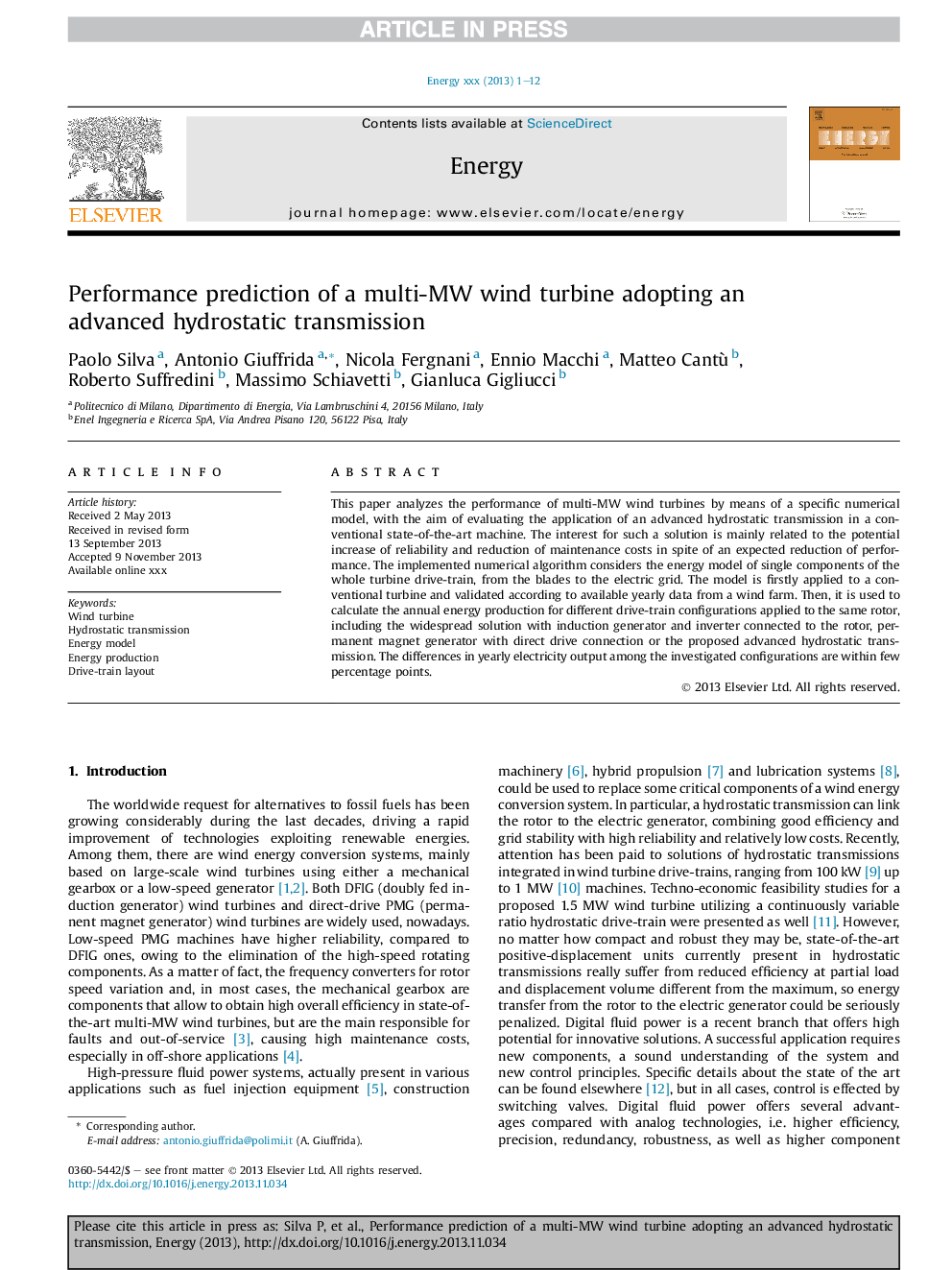| Article ID | Journal | Published Year | Pages | File Type |
|---|---|---|---|---|
| 8078750 | Energy | 2014 | 12 Pages |
Abstract
This paper analyzes the performance of multi-MW wind turbines by means of a specific numerical model, with the aim of evaluating the application of an advanced hydrostatic transmission in a conventional state-of-the-art machine. The interest for such a solution is mainly related to the potential increase of reliability and reduction of maintenance costs in spite of an expected reduction of performance. The implemented numerical algorithm considers the energy model of single components of the whole turbine drive-train, from the blades to the electric grid. The model is firstly applied to a conventional turbine and validated according to available yearly data from a wind farm. Then, it is used to calculate the annual energy production for different drive-train configurations applied to the same rotor, including the widespread solution with induction generator and inverter connected to the rotor, permanent magnet generator with direct drive connection or the proposed advanced hydrostatic transmission. The differences in yearly electricity output among the investigated configurations are within few percentage points.
Related Topics
Physical Sciences and Engineering
Energy
Energy (General)
Authors
Paolo Silva, Antonio Giuffrida, Nicola Fergnani, Ennio Macchi, Matteo Cantù, Roberto Suffredini, Massimo Schiavetti, Gianluca Gigliucci,
